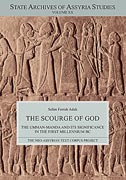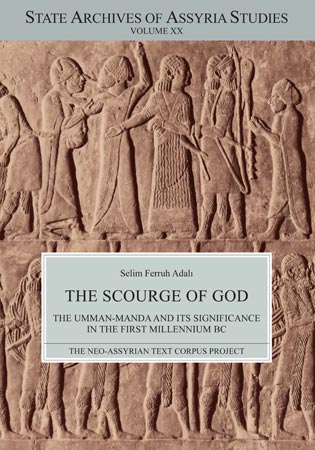The Scourge of God
The Umman-manda and Its Significance in the First Millennium BC
Selim Adali
Who were the Umman-manda? This is a question that has vexed Assyriologists since the early days of the discipline, particularly because the question has different answers at different times and in different places: Hurrians, Elamites, Medes, Cimmerians, Scythians—all have been cast as the Umman-manda by various peoples at various times.
- Description
- Table of Contents
- Subjects
With intractable questions such as this, it is useful on occasion to recapitulate all the evidence that applies to the question, to integrate new evidence that has appeared since the last recapitulation, and to see if a new synthesis of the evidence is possible. In this work, Adalı does precisely that. After collecting all the textual references to the Umman-manda, the author analyzes the writings, surveys the eytmologies proposed for the term Umman-manda over the years, and finally offers a new proposal for the etymology. He then investigates the nonliterary texts that mention the Umman-manda, seeking clues to their origins and ethnic makeup, finding, as others have, that the evidence is inconclusive and sometimes even contradictory.
Turning to the literary texts as a source for the Umman-manda, the author finds more fertile ground. Leaving aside the potential historical kernel of the Cuthaean Legend of Naram-Sin because the available evidence does not speak to this issue, Adalı turns his investigation to the Umman-manda as a lit
erary topos. By investigating the motifs and terminology used in the Cuthaean Legend and comparing them with similar usage in other literary works, the author is able to establish a leitmotif for the Umman-manda and then identify this leitmotif in the royal inscriptions of Assyrian and Babylonian kings.
While the question of who the original Umman-manda were remains a mystery, Adalı’s work offers new insights and a new outlook on the significance of the Umman-manda in the first millennium and particularly on the question of why the Umman-manda meant different things to different people at different times while, nevertheless, not all enemies were referred to as “Umman-Manda.” It provides a new departure point for further investigations of the Umman-manda as well as for the use of literary allusions in both Assyro-Babylonian literature and royal inscriptions.
Introduction
Sources and Written Form
Etymology
The Omen Tradition
The Literary Texts
From Anatolia and the Levant
Literary Allusions
Neo-Assyrian Sources
Neo-Babylonian Sources
Emerging Patterns
Excursus: The Lexical Analysis of mandum
Bibliography
Indices
Mailing List
Subscribe to our mailing list and be notified about new titles, journals and catalogs.




